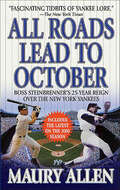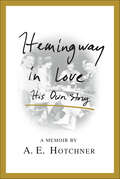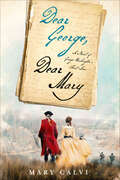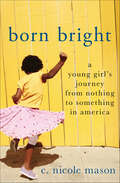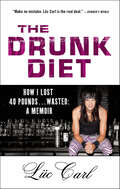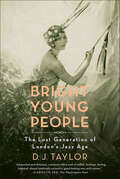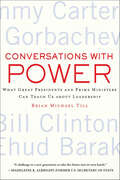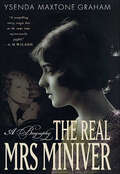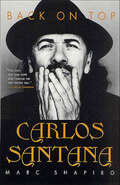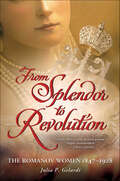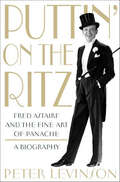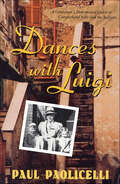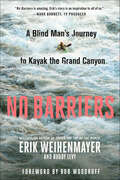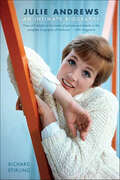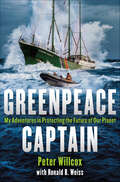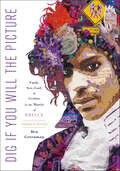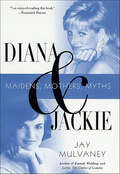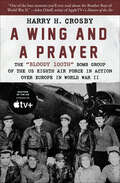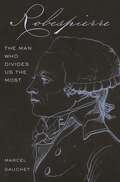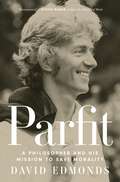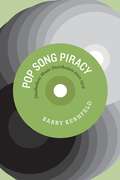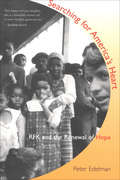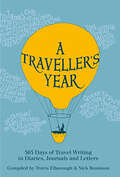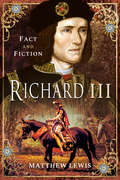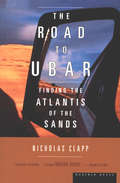- Table View
- List View
All Roads Lead to October: Boss Steinbrenner's 25-Year Reign Over the New York Yankees
by Maury AllenAll Roads Lead to October presents an up close and personal look at the New York Yankees under legendary owner George Steinbrenner.George Herman Ruth was the Babe. Lou Gehrig was the Iron Horse. Joe DiMaggio was the Yankee Clipper. George Steinbrenner is the Boss.On a rainy January morning, 1973, a press conference is called that will change the face of the Yankees forever. A young Cleveland Industrialist by the name of Steinbrenner stands at New York's famed 21 Club and announces his new ownership of the Yankees. And so begins the Steinbrenner era, the era of the Boss. Now with five World Championships to his name, Steinbrenner is not only the owner of one of the past century's winningest baseball teams, but a legendary figure in his own right. Both eccentric and egocentric, Steinbrenner's unique approach to the game turned a not-so-good 1973 Yankees squad into World Champions just five years later.As integral to the history of the Yankees as DiMaggio or Ruth, All Road Lead to October examines the team under Steinbrenner's reign. Having covered the Yankees since Steinbrenner came aboard, acclaimed sports journalist and noted author Maury Allen examines the complex and often fiery relationships the owner had with the likes of Billy Martin, Reggie Jackson, Yogi Berra, Joe Torre, Darryl Strawberry and many others. Here are the first hand, insider's accounts of the pivotal events in the Yankees rise to power. Covering both off the field and on the field controversies like Yankees pitchers Fritz Peterson and Mike Kekich's wife swapping, the angry tirades, fights and often brilliant coaching moves of the misunderstood Billy Martin, the inside story of the signing of Reggie Jackson whose ego was as big as his bat, and the Yankees rise to baseball dominance with the likes of Jeter, Williams, El Duque, Clemens, Rivera and Torre, Maury Allen give an exclusive look at all the action. Allen was there through it all, from Steinbrenner's first press conference, through the death of Catfish Hunter, the World Series wins, the controversial trades and firings, and even when a drunk Billy Martin banged on his hotel room door one night madder than hell. This is the definitive look at not only the Boss, the but the New York Yankees, the most celebrated team of the twentieth century.
Hemingway in Love: His Own Story
by A. E. HotchnerHemingway's deeply reflective account of his destructive Paris affair and how it affected the legendary life he rebuilt after, as told to his best friend, the writer A.E. Hotchner.In June of 1961, A. E. Hotchner visited a close friend in the psychiatric ward of St. Mary's Hospital. It would be the last time they spoke - three weeks later, Ernest Hemingway returned home, where he took his own life. Their final conversation was also the final installment in a saga that Hemingway had unraveled for Hotchner over years of world travel.Ernest always kept a few of his special experiences off the page, storing them as insurance against a dry-up of ideas. But after a near miss with death, he entrusted his most meaningful tale to Hotchner, so that if he never got to write it himself, then at least someone would know. In characteristically pragmatic terms, Hemingway divulged the details of the affair that destroyed his first marriage: the truth of his romantic life in Paris and how he gambled and lost Hadley, the great love he'd spend the rest of his life seeking.But the search was not without its notable moments, and he told of those, too: of impotence cured in a house of God; of back-to-back plane crashes in the African bush, one of which nearly killed him, while he emerged from the other brandishing a bottle of gin and a bunch of bananas; of cocktails and commiseration with F. Scott Fitzgerald and Josephine Baker; of adventure, human error, and life after lost love. This is Hemingway as few have known him - humble, thoughtful, and full of regret.To protect the feelings of Ernest's wife, Mary, who was also a close friend, Hotch kept these conversations to himself for decades. Now he tells the story as Hemingway told it to him. Hemingway in Love puts you in the room with the master and invites you to listen as he relives the drama of those young, definitive years that set the course for the rest of his life and dogged him to the end of his days.
Dear George, Dear Mary: A Novel of George Washington's First Love
by Mary CalviA novel about heiress Mary Philipse's relationship with George Washington, based on historical accounts, letters, and personal journals bynine-time New York Emmy Award-winning journalistMary Calvi.“Love is said to be an involuntary passion, and it is, therefore, contended that it cannot be resisted.” —George WashingtonDid unrequited love spark a flame that ignited a cause that became the American Revolution? Never before has this story about George Washington been told. Crafted from hundreds of letters, witness accounts, and journal entries, Dear George, Dear Mary explores George’s relationship with his first love, New York heiress Mary Philipse, the richest belle in Colonial America.From elegant eighteenth-century society to bloody battlefields, the novel creates breathtaking scenes and riveting characters. Dramatic portraits of the two main characters unveil a Washington on the precipice of greatness, using the very words he spoke and wrote, and his ravishing love, whose outward beauty and refinement disguise a complex inner struggle.Dear George, Dear Mary reveals why George Washington had such bitter resentment toward the Brits, established nearly two decades before the American Revolution, and it unveils details of a deception long hidden from the world that led Mary Philipse to be named a traitor, condemned to death and left with nothing. While that may sound like the end, ultimately both Mary and George achieve what they always wanted.
Born Bright: A Young Girl's Journey from Nothing to Something in America
by C. Nicole Mason*Green River College's 2018-2019 One Book Selection*Standing on the stage, I felt exposed and like an intruder. In these professional settings, my personal experiences with hunger, poverty, and episodic homelessness, often go undetected. I had worked hard to learn the rules and disguise my beginning in life... So begins Born Bright, C. Nicole Mason's powerful memoir, a story of reconciliation, constrained choices and life on the other side of the tracks. Born in the 1970s in Los Angeles, California, Mason was raised by a beautiful, but volatile16-year-old single mother. Early on, she learned to navigate between an unpredictable home life and school where she excelled. By high school, Mason was seamlessly straddling two worlds. The first, a cocoon of familiarity where street smarts, toughness and the ability to survive won the day. The other, foreign and unfamiliar with its own set of rules, not designed for her success. In her Advanced Placement classes and outside of her neighborhood, she felt unwelcomed and judged because of the way she talked, dressed and wore her hair. After moving to Las Vegas to live with her paternal grandmother, she worked nights at a food court in one of the Mega Casinos while finishing school. Having figured out the college application process by eavesdropping on the few white kids in her predominantly Black and Latino school along with the help of a long ago high school counselor, Mason eventually boarded a plane for Howard University, alone and with $200 in her pocket.While showing us her own path out of poverty, Mason examines the conditions that make it nearly impossible to escape and exposes the presumption harbored by many—that the poor don't help themselves enough.
The Drunk Diet: How I Lost 40 Pounds . . . Wasted: A Memoir
by Lüc CarlWith his trademark Rock 'N Roll hair and snakeskin spandex pants, plus a hot rod and a Harley, Lüc Carl fit the part as a bar manager based in New York City's gritty Lower East Side. And life was good for this Omaha, Nebraska, transplant—a talented drummer who originally moved to the big city to pursue his Rock 'N Roll dreams—until, suddenly, it wasn't. Fast forward through seven years of working long hours, bingeing on late-night Chinese food, and drinking excessively; life had found Lüc forty pounds overweight and completely out of shape. But when he turned to the "experts" for advice—reading countless fitness and weight-loss books in the process—he discovered that they all made the same claim: "You can't drink alcohol if you want to lose weight." Lüc decided to take matters into his own hands to transform his body and his life his way—a sort of "f*ck you" to all those so-called experts.Full of charismatic wit and raucous stories about his life, The Drunk Diet will inspire and challenge you to become fitter, healthier, and happier. Lüc's fitness philosophy isn't about following a list of rigid rules or traditional "do this, not that" charts, but gaining a better understanding of how the body works and discovering what you're personally willing to change about your lifestyle in order to reach your goals. For him, that meant trading in the crap he was eating for unprocessed, natural foods and embracing a newfound love for exercise, but never sacrificing his social life (or his love for cold beer).This is the story of how one chain-smoking, cheeseburger-eating, hard-partying Rock 'N Roller—a self-proclaimed "out-of-shape, bloated asshole"—grew into an avid runner and cyclist and, ultimately, a happier version of himself. He will be the first to tell you: If he could do it, so can you.
Bright Young People: The Lost Generation of London's Jazz Age
by D. J. TaylorD.J. Taylor's Bright Young People offers a scintillating portrait of 1920s London and the birth of the cult of celebrity.Before the media circus of Britney, Paris, and our modern obsession with celebrity, there were the Bright Young People, a voraciously pleasure-seeking band of bohemian party-givers and blue-blooded socialites who romped through the gossip columns of 1920s London. Evelyn Waugh immortalized their slang, their pranks, and their tragedies in his novels, and over the next half century, many—from Cecil Beaton to Nancy Mitford and John Betjeman—would become household names.But beneath the veneer of hedonism and practical jokes was a tormented generation, brought up in the shadow of war. Sparkling talent was too often brought low by alcoholism and addiction. Drawing on the virtuosic and often wrenching writings of the Bright Young People themselves, the biographer and novelist D. J. Taylor has produced an enthralling account of an age of fleeting brilliance.
Conversations with Power: What Great Presidents and Prime Ministers Can Teach Us about Leadership
by Brian Michael TillFresh out of college, and frustrated with own generation's political apathy, Brian Till set out to interview the former world leaders he most admired. To his surprise, they were eager to talk, and he soon found himself discussing everything from energy to terrorism to nuclear disarmament with the greatest leaders of the last twenty-five years. Here, he distills what they learned in office, their predictions for the future, and their advice for the leaders of tomorrow. Including interviews with:*Bill Clinton*Gro Bruntland*Jimmy Carter*Fernando Henrique Cardoso*Ehud Barak*Vaclav Havel*Mikhail Gorbachev*Pervez Musharraf*F.W. de Klerk*Ricardo Lagos*Helmut Schmidt*Goh Chok Tong*Paul Keating
The Real Mrs Miniver: A Biography
by Ysenda Maxtone GrahamIn 1937 the Court Page of the London Times began publishing a series of articles featuring a charming, upper-middle class English housewife named Mrs Miniver. The articles depicted an idyllically happy family with three children, a house in London, and a country cottage called Starlings. Two years later, Mrs Miniver was published in book form. While some critics derided the book as sentimental, many readers embraced it as a symbol of an increasingly endangered English way of life, and it went on to become the #1 bestseller in America. The Hollywood film, released in 1942 with Greer Garson in the title role, won five Oscars, including Best Picture, and did so much to promote the American war effort in Europe that even Josef Goebbels recognized it as an exemplary piece of propaganda.But who was the real Mrs Miniver? The articles were produced by Joyce Maxtone Graham, who wrote under the name Jan Struther and seemed to resemble her heroine: She was upper-middle class, and lived in a gracious, comfortable home with her husband and three children. After the war broke out, she served as an unofficial ambassador from Great Britain to the U.S.In truth, however, Jan Struther was not at all like the conventional Mrs Miniver. It wasn't merely that she didn't like tea--to the amazement of everyone in America--but her real life was neither simple nor saintly. Her marriage was ending, and she was secretly in love with a Jewish refugee from Nazi Austria. Written by Jan Struther's granddaughter Ysenda Maxtone Graham, The Real Mrs Miniver is a complex and fascinating biography. While the Hollywood version remains a powerful and inspirational movie, this book offers brilliant insights into the true impact of war upon real people's lives.
Carlos Santana: Back on Top
by Marc ShapiroCarlos Santana took the music world by storm back in 1969 with his thrilling performance at the Woodstock festival. He was the first guitarist to skillfully blend fiery rock riffs with Latin, blues and sensuous Afro-Cuban rhythms to create a unique and unforgettable sound. His vision to create innovative melodies has earned him a magnitude of critical praise and acclaim over his illustrious career. But, the road to success has been a rocky, uphill climb.The middle child of seven children, Carlos Santana was born on July 20, 1947 in a tiny Mexican village where the homes were comprised of brick and mud, and there was no running water or lights. But, what his parents couldn't give in material wealth, they heaped upon their children in love. It was after the family moved to Tijuana that twelve year old Carlos developed his talent for the guitar and his reputation as a formidable musician spread. In 1968 Columbia Records signed on the Santana Blues Band and they began in earnest to work on an album that would include such popular Latin and soul favorites as "Black Magic Woman," "Evil Ways," and "Oye Como Va". On August 15, 1969, the Santana band was given the opportunity to play Woodstock before the release of their first album and this performance would forever be etched in fans' minds as a key moment in rock history. The Santana Blues Bands went from obscurity to instant recognition. Shortly thereafter, rumblings of discontent were echoed within the group with the volatile mixture of drug abuse, personality clashes, and the frustrations over the musical direction the band, ultimately leading to the demise of the group.Following the breakup, Carlos Santana delved deeper into the meditative arts and spirituality. The succession of albums that followed were greeted with critical acclaim, but moderate success. In the late 90's, Santana begin working on a new album under the creative direction of Clive Davis, head of Arista Records. In a brilliant union of collaborating with younger artists as Lauryn Hill, Wyclef Jean, and Rob Thomas, the album, Supernatural was a commercial smash. It sold over thirteen million copies, and appealed to both the baby boomers and the teenage crowd. Carlos Santana became the star of the 2000 Grammys, and Supernatural won several awards including, Best Rock Album of the Year, Song of the Year for "Smooth", and Album of the Year. With a career that spans three decades, Carlos Santana p0has proven that talent, determination, and passion are the keys to longevity in a business that is obsessed with youth and beauty. Against the odds, he has defied the rule of convention and made an incredible comeback. His story is timeless, inspirational, and he has undoubtedly proven himself to be the king of the guitar.
From Splendor to Revolution: The Romanov Women 1847–1928
by Julia P. GelardiThis sweeping saga recreates the extraordinary opulence and violence of Tsarist Russia as the shadow of revolution fell over the land, and destroyed a way of life for these Imperial women The early 1850s until the late 1920s marked a turbulent and significant era for Russia. During that time the country underwent a massive transformation, taking it from days of grandeur under the tsars to the chaos of revolution and the beginnings of the Soviet Union. At the center of all this tumult were four women of the Romanov dynasty. Marie Alexandrovna and Olga Constantinovna were born into the family, Russian Grand Duchesses at birth. Marie Feodorovna and Marie Pavlovna married into the dynasty, the former born a Princess of Denmark, the latter a Duchess of the German duchy of Mecklendburg-Schwerin. In From Splendor to Revolution, we watch these pampered aristocratic women fight for their lives as the cataclysm of war engulfs them. In a matter of a few short years, they fell from the pinnacle of wealth and power to the depths of danger, poverty, and exile. It is an unforgettable epic story.
Puttin' On the Ritz: Fred Astaire and the Fine Art of Panache, A Biography
by Peter LevinsonFred Astaire defined elegance on the dance floor. With white tie, tails and a succession of elegant partners - Ginger Rogers, Cyd Charisse, Rita Hayworth, Eleanor Powell, Judy Garland and others - he created an indelible image of the Anglo bon vivant. His origins, though, were far more humble: Born in Omaha, Nebraska, Fred Astaire came from Midwestern stock that partially had its origin in the late nineteenth century Jewish communities of Austria. At first, he played second fiddle in vaudeville to his sister, Adele; however, once he learned how to tap and bought his first Brooks Brothers suit, the game changed. How did he transform himself from a small town Nebraska boy into the most sophisticated man ever to dance across a dance floor? In this comprehensive new book about the life and artistry of Fred Astaire, Peter Levinson looks carefully at the entirety of Astaire's career from vaudeville to Broadway to Hollywood to television. He explores Astaire's relationships with his vivacious dance partners, his friendship with songwriters like George Gershwin and Irving Berlin and his relationship with choreographers like Hermes Pan to discover how Astaire, in effect, created his elegant persona. Astaire put his mark on the Hollywood musical, starting his career at RKO and then moving to MGM. From his long list of films, certain classics like "Swing Time", "Top Hat", "Royal Wedding" and "The Bandwagon" revolutionized the presentation of dance on film; but, he also revolutionized the television variety special with the Emmy-Award-Winning "An Evening With Fred Astaire". For 'Puttin' on the Ritz", veteran Hollywood insider, Peter Levinson interviewed over two hundred people who worked closely with Astaire such as Debbie Reynolds, Dick Van Dyke, Artie Shaw, Bobby Short, Oscar Peterson, Mel Ferrer, Betty Garrett, Joel Grey, Arlene Dahl, Michael Kidd, Betty Comden, Onna White, Margaret Whiting, Andy Williams, and others like Quincy Jones, John Travolta, and John Williams, to provide an intimate window on to his professional as well as his personal life. His new biography of Astaire is a celebration of the great era of sophistication on Broadway and in Hollywood as seen through the life of a man who learned how to put on the Ritz and become America's premiere song-and-dance-man: Fred Astaire.
Dances with Luigi: A Grandson's Determined Quest to Comprehend Italy and the Italians
by Paul PaolicelliIn this spirited memoir, veteran TV journalist Paul Paolicelli does what many of us can only dream of--he picks up and moves to a foreign country in an attempt to trace his ancestral roots. With the help of Luigi, his guide and companion, he travels through Italy--Rome, Gamberale, Matera, Miglionico, Alessandria, even Mussolini's hometown of Predappio--and discovers the tragic legacy of the Second World War that is still affecting the Old Country. He visits ancient castles and village churches, samples superb Italian cuisine, haggles at the open air market at Porta Portese, enjoys and Alessandria siesta, and frequents "coffee bars", where beggars discuss politics with affluent Italian locals. He finds lost-lost cousins during the day and performs with an amateur jazz group during the night. Along the way, he discovers deeply moving stories about his family's past and learns answers to question that have plagued him since childhood.More that just a spiritual account of one man's ancestral search, Dances With Luigi is also a stunning portrait of la bella Italia--both old and new--that is painted beautifully in all of its glamour, history, and contradiction.
No Barriers: A Blind Man's Journey to Kayak the Grand Canyon
by Erik Weihenmayer Buddy Levy2018 Colorado Book Awards finalist in Creative Nonfiction,andNational Bestseller and Honorable Mention Award Winner in the Outdoor Literature category of the 2017 National Outdoor Book Awards (NOBA) “A beautiful book about family and finding a way to achieve more than you ever thought possible.” —Brad Meltzer, New York Times bestselling authorErik Weihenmayer is the first and only blind person to summit Mount Everest, the highest point on Earth. Descending carefully, he and his team picked their way across deep crevasses and through the deadly Khumbu Icefall; when the mountain was finally behind him, Erik knew he was going to live. His expedition leader slapped him on the back and said something that would affect the course of Erik’s life: “Don’t make Everest the greatest thing you ever do.”No Barriers is Erik’s response to that challenge. It is the moving story of his journey since descending Mount Everest: from leading expeditions around the world with blind Tibetan teenagers to helping injured soldiers climb their way home from war, from adopting a son from Nepal to facing the most terrifying reach of his life: to solo kayak the thunderous whitewater of the Grand Canyon.Along the course of Erik’s journey, he meets other trailblazers—adventurers, scientists, artists, and activists—who, despite trauma, hardship, and loss, have broken through barriers of their own. These pioneers show Erik surprising ways forward that surpass logic and defy traditional thinking.Like the rapids of the Grand Canyon, created by inexorable forces far beneath the surface, No Barriers is a dive into the heart and mind at the core of the turbulent human experience. It is an exploration of the light that burns in all of us, the obstacles that threaten to extinguish that light, and the treacherous ascent towards growth and rebirth.
Julie Andrews: An Intimate Biography
by Richard StirlingJulie Andrews is the last of the great Hollywood musical stars, unequaled by any in her time.In My Fair Lady, Julie Andrews had the biggest hit on Broadway. As the title character in Mary Poppins, she won an Academy Award. And, in 1965, The Sound of Music made her the most famous woman in the world and rescued Twentieth Century Fox from bankruptcy. Three years later, the disastrous Star! almost put the studio back under, and the leading lady of both films fell as spectacularly as she had risen.Her film career seemed over.Yet Julie Andrews survived, with what Moss Hart, director of My Fair Lady, called "that terrible British strength that makes you wonder why they lost India." Victor/Victoria, directed by her second husband, Blake Edwards, reinvented her screen image---but its stage version in 1997 led to the devastating loss of her defining talent, her singing voice.Against all odds, she has fought back again, with leading roles in The Princess Diaries and Shrek 2. The real story of bandy-legged little Julia Wells from Walton-on-Thames is even more extraordinary; fresh details of her family background have only recently come to light.This is the first completely new biography of Julie Andrews as artist, wife, and mother in over thirty-five years---combining the author's interviews with the star and his wide-ranging and riveting research. It is a frank but affectionate portrait of an enduring icon of stage and screen, who was made a Dame in the Millenium Honours List. Once dubbed "the last of the really great broads" by Paul Newman, she was the only actress in the 2002 BBC poll The 100 Greatest Britons. But who was Dame Julie, and who is she now?This is her story.
Greenpeace Captain: My Adventures in Protecting the Future of Our Planet
by Peter Willcox Ronald B. WeissA Man. A Mission. GREENPEACE CAPTAIN PETER WILLCOX has been a Captain for Greenpeace for over 30 years. He would never call himself a hero, but he is recognized on every ocean and continent for devoting his entire life to saving the planet. He has led the most compelling and dangerous Greenpeace actions to bring international attention to the destruction of our environment. From the globally televised imprisonment of his crew, the "Arctic 30," by Russian Commandos to international conspiracies involving diamond smuggling, gun-trading and Al-Qaeda, Willcox has braved the unimaginable and triumphed. This is his story--which begins when he was a young man sailing with Pete Seeger and continues right up to his becoming the iconic environmentalist he is today. His daring adventures and courageous determination will inspire readers everywhere.
Dig If You Will the Picture: Funk, Sex, God, & Genius in the Music of Prince
by Ben GreenmanNamed one of the best music books of 2017 by The Wall Street JournalA unique and kaleidoscopic look into the life, legacy, and electricity of the pop legend Prince and his wideranging impact on our cultureBen Greenman, New York Times bestselling author, contributing writer to the New Yorker, and owner of thousands of recordings of Prince and Prince-related songs, knows intimately that there has never been a rock star as vibrant, mercurial, willfully contrary, experimental, or prolific as Prince. Uniting a diverse audience while remaining singularly himself, Prince was a tireless artist, a musical virtuoso and chameleon, and a pop-culture prophet who shattered traditional ideas of race and gender, rewrote the rules of identity, and redefined the role of sex in pop music.A polymath in his own right who collaborated with George Clinton and Questlove on their celebrated memoirs, Greenman has been listening to and writing about Prince since the mid-eighties. Here, with the passion of an obsessive fan and the skills of a critic, journalist, and novelist, he mines his encyclopedic knowledge of Prince’s music to tell both his story and the story of the paradigm-shifting ideas that he communicated to his millions of fans around the world. Greenman's take on Prince is the autobiography of a generation and its ideas. Asking a series of questions—not only “Who was Prince?” but “Who wasn’t he?” and “Who are we?”—Dig if You Will the Picture is a fitting tribute to an extraordinary talent.
Diana & Jackie: Maidens, Mothers, Myths
by Jay MulvaneyHistory has seen only a few women so magical, so evanescent, that they captured the spirit and imagination of their times. Diana, Princess of Wales and Jacqueline Kennedy Onassis were two of these rare creatures. They were the most famous women of the twentieth century--admired, respected, even adored at times; rebuked, mocked and reviled at others. Separated by nationality and a generation apart, they led two surprisingly similar lives.Both were the daughters of acrimonious divorce. Both wed men twelve years their senior, men who needed "trophy brides" to advance their careers. Both married into powerful and domineering families, who tried, unsuccessfully, to tame their willful independence. Both inherited power through marriage and both rebelled within their official roles, forever crushing the archetype. And both revolutionized dynasties.And yet in many ways they were completely different: Jackie lived her life with an English "stiff upper lip"--never complaining, never explaining in the face of immense public curiosity. Diana lived her life with an American "quivering lower lip"--with televised tell-alls, exposing her family drama to a world eager for every detail.These two lives have been well documented but never before compared. And never before examined in the context of their times. Jay Mulvaney, author of Kennedy Weddings and Jackie: The Clothes of Camelot, probes the lives of these two twentieth century icons and discovers:-The nature of their personalities forged from the cradle by their relationships with their fathers, Black Jack Bouvier and Johnny Spencer-Their early years, and their early relationships with men.-Their marriages, and the truth behind the lies, the betrayals and the arrangements.-Their greatest achievements: motherhood.-Their prickly relationships with their august mothers-in-law, Rose Fitzgerald Kennedy and Queen Elizabeth II-Their lives as single women, working mothers.Their roles as icons and archetypes.Graced with never before seen photographs from many private collections, and painstakingly researched, Diana and Jackie presents these two remarkable and unique women as they have never been seen before.
A Wing and a Prayer: The "Bloody 100th" Bomb Group of the US Eighth Air Force in Action Over Europe in World War II
by Harry H. Crosby&“A compelling account of the air war against Germany&” written by the navigator portrayed by Anthony Boyle in Apple TV&’s Masters of the Air (Publishers Weekly). They began operations out of England in the spring of &’43. They flew their Flying Fortresses almost daily against strategic targets in Europe in the name of freedom. Their astonishing courage and appalling losses earned them the name that resounds in the annals of aerial warfare and made the &“Bloody Hundredth&” a legend. Harry H. Crosby—depicted in the miniseries Masters of the Air developed by Tom Hanks and Steven Spielberg—arrived with the very first crews, and left with the very last. After dealing with his fear and gaining in skill and confidence, he was promoted to Group Navigator, surviving hairbreadth escapes and eluding death while leading thirty-seven missions, some of them involving two thousand aircraft. Now, in a breathtaking and often humorous account, he takes us into the hearts and minds of these intrepid airmen to experience both the triumph and the white-knuckle terror of the war in the skies. &“Affecting . . . A vivid account . . . Uncommonly thoughtful recollections that address the moral ambiguities of a great cause without in any way denigrating the selfless valor or camaraderie that helped ennoble it.&” —Kirkus Reviews &“Re-creates for us the sense of how it was when European skies were filled with noise and danger, when the fate of millions hung in the balance. An evocative and excellent memoir.&” —Library Journal &“The acrid stench of fear and cordite, the coal burning stoves, the heroics, the losses . . . This has to be the best memoir I have read, bar none.&” —George Hicks, director of the Airmen Memorial Museum
Robespierre: The Man Who Divides Us the Most
by Marcel GauchetHow Robespierre’s career and legacy embody the dangerous contradictions of democracyMaximilien Robespierre (1758–1794) is arguably the most controversial and contradictory figure of the French Revolution, inspiring passionate debate like no other protagonist of those dramatic and violent events. The fervor of those who defend Robespierre the “Incorruptible,” who championed the rights of the people, is met with revulsion by those who condemn him as the bloodthirsty tyrant who sent people to the guillotine. Marcel Gauchet argues that he was both, embodying the glorious achievement of liberty as well as the excesses that culminated in the Terror.In much the same way that 1789 and 1793 symbolize the two opposing faces of the French Revolution, Robespierre’s contradictions were the contradictions of the revolution itself. Robespierre was its purest incarnation, neither the defender of liberty who fell victim to the corrupting influence of power nor the tyrant who betrayed the principles of the revolution. Gauchet shows how Robespierre’s personal transition from opposition to governance was itself an expression of the tragedy inherent in a revolution whose own prophetic ideals were impossible to implement.This panoramic book tells the story of how the man most associated with the founding of modern French democracy was also the first tyrant of that democracy, and it offers vital lessons for all democracies about the perpetual danger of tyranny.
Parfit: A Philosopher and His Mission to Save Morality
by David EdmondsFrom the bestselling coauthor of Wittgenstein&’s Poker, an entertaining and illuminating biography of a brilliant philosopher who tried to rescue morality from nihilismDerek Parfit (1942–2017) is the most famous philosopher most people have never heard of. Widely regarded as one of the greatest moral thinkers of the past hundred years, Parfit was anything but a public intellectual. Yet his ideas have shaped the way philosophers think about things that affect us all: equality, altruism, what we owe to future generations, and even what it means to be a person. In Parfit, David Edmonds presents the first biography of an intriguing, obsessive, and eccentric genius.Believing that we should be less concerned with ourselves and more with the common good, Parfit dedicated himself to the pursuit of philosophical progress to an extraordinary degree. He always wore gray trousers and a white shirt so as not to lose precious time picking out clothes, he varied his diet as little as possible, and he had only one serious non-philosophical interest: taking photos of Oxford, Venice, and St. Petersburg. In the latter half of his life, he single-mindedly devoted himself to a desperate attempt to rescue secular morality—morality without God—by arguing that it has an objective, rational basis. For Parfit, the stakes could scarcely have been higher. If he couldn&’t demonstrate that there are objective facts about right and wrong, he believed, his life was futile and all our lives were meaningless.Connecting Parfit&’s work and life and offering a clear introduction to his profound and challenging ideas, Parfit is a powerful portrait of an extraordinary thinker who continues to have a remarkable influence on the world of ideas.
Pop Song Piracy: Disobedient Music Distribution since 1929
by Barry KernfeldThe music industry’s ongoing battle against digital piracy is just the latest skirmish in a long conflict over who has the right to distribute music. Starting with music publishers’ efforts to stamp out bootleg compilations of lyric sheets in 1929, Barry Kernfeld’s Pop Song Piracy details nearly a century of disobedient music distribution from song sheets to MP3s. In the 1940s and ’50s, Kernfeld reveals, song sheets were succeeded by fake books, unofficial volumes of melodies and lyrics for popular songs that were a key tool for musicians. Music publishers attempted to wipe out fake books, but after their efforts proved unsuccessful they published their own. Pop Song Piracy shows that this pattern of disobedience, prohibition, and assimilation recurred in each conflict over unauthorized music distribution, from European pirate radio stations to bootlegged live shows. Beneath this pattern, Kernfeld argues, there exists a complex give and take between distribution methods that merely copy existing songs (such as counterfeit CDs) and ones that transform songs into new products (such as file sharing). Ultimately, he contends, it was the music industry’s persistent lagging behind in creating innovative products that led to the very piracy it sought to eliminate.
Searching for America's Heart: RFK and the Renewal of Hope
by Peter EdelmanFrom an author who resigned from the Clinton administration: “Part memoir and part manifesto . . . a beautifully written call to renew the fight against poverty.”?Jonathan Kozol, New York Times bestselling author of Savage InequalitiesPeter Edelman has worked as an aide to Robert F. Kennedy, a lawyer, a children’s advocate, and a policymaker. He has devoted his life to the cause of justice and to ending inequality. But in 1996, while serving in the Clinton administration as an expert on welfare policy and children, he found himself in an untenable position. The president signed a new welfare bill that ended a sixty-year federal commitment to poor children, and as justification invoked the words of RFK. For Edelman, Clinton’s twisting of Kennedy’s vision was deeply cynical, so in a rare gesture that sparked front-page headlines, he resigned. The nation, he believed, had been harmed.In this book, he shows that in an age of unprecedented prosperity, Americans have in many respects forsaken their fellow citizens, leaving behind a devastatingly large number of poor and near-poor, many of them children. Edelman shines a bright light on these forgotten Americans. Based in part on a firsthand look at community efforts across the country, he also proposes a bold and practical program for addressing the difficult issues of entrenched poverty, focusing on novel ways of braiding together national and local civic activism, reinvigorating our commitment to children, and building hope in our most shattered communities—creating a vision true to the legacy of Robert F. Kennedy.“Moving and insightful.” —Atlanta Journal-Constitution“I have read a lot of books on inequality, but none offers a more thoughtful vision of poverty and welfare in America . . . compelling.”?William Julius Wilson, author of When Work Disappears
A Traveller's Year: 365 Days of Travel Writing in Diaries, Journals and Letters
by Travis Elborough Nick BennisonA collection of anecdotes for each day of the year on the subject of travel and exploration from Charles Darwin, Michael Palin, Evelyn Waugh, and others.With an emphasis on the period 1750–1950—the classic era of both European exploration and diary-writing—this anthology features excerpts that convey men and women’s experiences of travel and discovery from the sixteenth to the early twenty-first centuries. The authors of the pieces range from famous explorers such as Captains Cook and Scott to modern travel writers journeying through the contemporary world, from people who pushed back the boundaries of geographical knowledge to people who wrote about what they did on their summer holidays.The book includes an introduction, explanatory notes and mini-biographies of all the contributors, including:Gertrude Bell (woman traveller in the Middle East)James Boswell (travels in Scotland and the Hebrides)William Cobbett (Rural Rides through England)Christopher Columbus (journals of his voyages to America)Charles Darwin (Voyage of the Beagle)Captain James Cook (voyages in the Pacific)Washington Irving (American writer travelled in Europe in first decades of nineteenth century)Edward Lear (landscape painter and nonsense writer produced journals of his travels in Greece, Corsica, Near East etc)Lewis & Clark (journals of famous journey of American exploration)William Morris (wrote a journal of a trip to Iceland in 1870s)Michael Palin (a Python abroad)Mungo Park (African explorer in early nineteenth century)Captain Robert Falcon Scott (doomed journey to South Pole)Evelyn Waugh (diaries of 1930s travels in Mediterranean and beyond)William John Wills (explorer of Australia)
Richard III: Loyalty Binds Me (Fact and Fictions)
by Matthew Lewis&“Bust[s] some commonly held myths that have built up about Richard III over the centuries, most coming from Shakespeare&’s famous play . . . eye-opening.&” —Sarah Bryson, author of La Reine Blanche: Mary Tudor, a Life in Letters King Richard III remains one of the most infamous and recognizable monarchs in English or British history, despite only sitting on the throne for two years and fifty-eight days. His hold on the popular imagination is largely due to the fictional portrayal of him by William Shakespeare which, combined with the workings of five centuries of rumor and gossip, has created two opposing versions of Richard. In fiction he is the evil, scheming murderer who revels in his plots, but many of the facts point towards a very different man. Dissecting a real Richard III from the fictional versions that have taken hold is made difficult by the inability to discern motives in many instances, leaving a wide gap for interpretation that can be favorable or damning in varying degrees. It is the facts that will act as the scalpel to begin the operation of finding a truth obscured by fiction. Richard III may have been a monster, a saint, or just a man trying to survive, but any view of him should be based in the realities of his life, not the myths built on rumor and theater. How much of what we think we know about England&’s most controversial monarch will remain when the facts are sifted from the fictions? &“He&’s been portrayed as one of history&’s biggest baddies—and Shakespeare shares the blame for that.But now historian and author Matt Lewis is out to right the wrong done to Richard III.&” —Shropshire Star
The Road to Ubar: Finding the Atlantis of the Sands
by Nicholas ClappThe author recounts his discovery of a lost Arabian city in this “captivating story of [a] stupendous archeological achievement” (Kirkus).No one thought that Ubar, the most fabled city of ancient Arabia, would ever be found, if it even existed. According to the Koran, the ancient trading outpost was sunk into the desert as punishment for the sins of its people. Over the centuries, many searched for the legendary “Atlantis of the Sands”—including Lawrence of Arabia—yet the city remained lost. Until now.Documentary filmmaker and amateur archaeologist Nicholas Clapp first stumbled on the legend of Ubar in the 1980s while poring over historical manuscripts. Filled with overwhelming curiosity, Clapp led two expeditions to Arabia with a team that included space scientists and geologists. In The Road to Ubar, he chronicles the grand adventure that led to a historic discovery.
